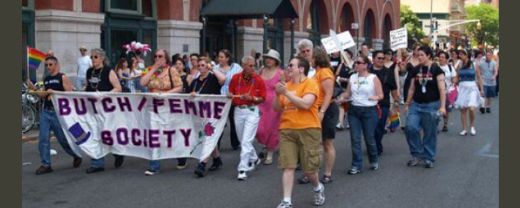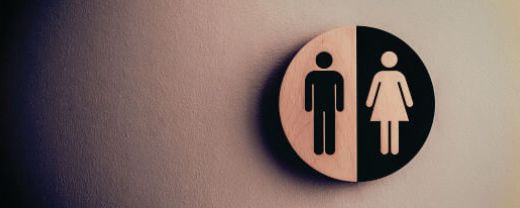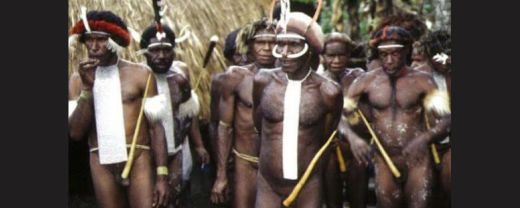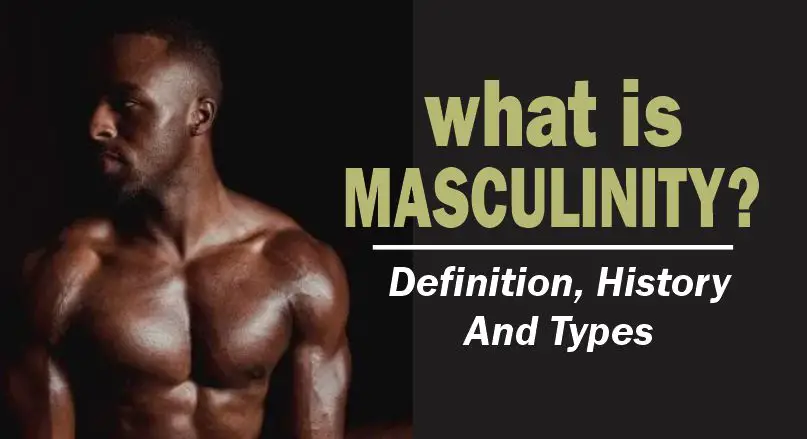Last updated on January 22nd, 2024 at 03:00 pm
What is masculinity? Discover the true meaning of traditional manliness, its definition, historical context, and how it shapes and influences society today.
Ideas about what it means to be a man are prevalent. While most are healthy ways of expressing manliness, the majority are toxic and harmful to the individual and people around him.
Masculinity also called manhood is the opposite of feminine identity or womanhood. These are the two traditional genders, each with its expected behaviours.
There are prevailing codes within societies that put pressure on and generate expectations around men, with implications for women, children, and society as a whole.
RELATED: Fragile Masculinity: Signs and Examples
There is no uniform set of expectations around manliness. Men also “act” they’re being masculine differently and inconsistently depending on the period, socio-cultural context, and group or network they are in.
Women play a significant role in the interpretation and understanding of being a man, particularly in their interactions with men and boys, just as masculinity is defined by its relationship with femininity.
It expects men to be stoic, and brave while women are expected to be emotive, passive, and sentimental.
Table of Contents
- What is Masculinity?
- History of Masculinity
- Development of Manliness
- Types of Masculinities
- Precarious Masculinity
- How Masculinity is Created
- How Young Men Learn Masculinity
- The Man Box
- Young Men and Risk-taking Behaviours
- Masculinity in Women
- Masculinity and Health
- Gender-role Stress
- Masculinity in Crisis
- Masculinities and the Men’s Rights Movement
- Masculinity in East Asian Cultures
- Masculinity in East African Cultures
- Western Media Influence on Manliness
- Portrayals of Masculinity in Fashion
- Effects of Manliness on Youth
- Manliness and Fatherhood
- Efforts Toward Gender Equality
- Conclusion
What is Masculinity?

From the moment of birth, humans have designated a gender according to biological features, masculine or feminine.
The biological features that inform the designation of gender are sex organs, hormonal profiles, and chromosomes.
This categorization of humans into male or female does not have a place for intersex humans like those who have both male and female biological features.
Before we delve fully into what masculinity is, we would like to explain what gender is.
Gender
Gender is the social expectation that has to do with being male or female and has its origins since the beginning of man.
After birth, we grow up learning about the meaning and differences between males and females and what is expected of them.
We are directly and indirectly taught about gender roles, behaviours, and attributes that are seen as appropriate for each gender (male or female).
In this post, we are going to strictly focus on masculinity and everything surrounding it.
Related: Striking a Balance on Masculine and Feminine Energy

Definition of Masculinity
Masculinity is the interpretation given to the expression of a set of attributes and behaviours which are expected of men and boys.
It is a form of gender, identity, and a social role associated but not exclusively with men and boys.
There is no fixed definition of manliness. This is because it is about what man is expected of socially in society.
The socially constructed definitions of what it means to be a man change over time and from place to place.
RELATED: Harmful and Dangerous Masculinity
Behaviours considered to be masculine are driven or influenced by cultural and biological factors and so are socially constructed.
This is why in recent times we have begun to see people who change or wish to change their gender for whatever reasons.
So, it’s safe to say that manliness is a short way to describe the social expectations, practices, and behaviours of manliness.
These expectations are reinforced every day by people, institutions including religion, media, economies, and the law.

History of Masculinity
Masculinity and its expression have been in existence since the beginning of man.
Both in ancient and recent history, men have been expected to act or show certain behaviours that project them as the dominant gender.
The Ancient History of Masculinity
There have been historical and cultural variations in the concept of being a man.
Time and place are factors in the variation of masculinity. Most researchers discuss masculinity in its plural form instead of as a singular encompassing concept.
Dating back to 3000 BC, in ancient literature both in myth and reality, men were explicitly expected by law to be masculine enough in wars to become heroes.
ALSO READ: Dangers with the Nice Guy
For instance, according to the code of Hammurabi around 1750 BC,
- Rule 3 read: “If anyone brings an accusation of any crime before the elders, and does not prove what he has charged, he shall if it is a capital offense charged, be put to death.” And,
- Rule 128 read: “If a man takes a woman to wife, but has no intercourse with her, this woman is no wife to him.”
Also, around 1000 BC in the Hebrew Bible, when King David was about to die, he summoned his son Solomon to be strong enough to show himself to be a man.
Another example of being a man in ancient times is found in the book of Tacitus, Germania in 98 AD where he stated the ancient men from the tribe of Germania were so aggressive in their battle that their women would not be captured by their enemies.
“It stands on record that armies already wavering and on the point of collapse have been rallied by the women, pleading heroically with their men, thrusting forward their bared bosoms, and making them realize the imminent prospect of enslavement – a fate which the Germans fear more desperately for their women than for themselves.”
-Tacitus (Germania)
Arminius, a great warrior of Germania is described as a masculine hero who was violent which was aggravated by the kidnapping of his wife by the Roman warrior, Germanicus.
The above records and other records in history show that manliness has been a thing since ancient times and continues to be today.
No matter the variations over time, the concept remains the same.
Also, during the medieval and Victorian eras, there was masculinity was chivalric where courage and respect for women of all classes were the expectation of men.
The Victorian Era saw the transformation of manliness from the original traditional heroism which has become obsolete to the new masculine standard which is somehow elusive because it is yet to take a stable form but looks in the direction of intelligence and its application.
Boxing is a manly sport and was made a profession in the West in the 19th century. It projected physical and confrontational expressions of being a man.
Recent History of Masculinity
The 20th century saw the family which has the father and husband as the breadwinner and the wife as the home keeper.
In the African typical 20th century family, the man as the head of the family farmed hard with his many wives helping out with some of the farm work.
But he did the major work to be able to feed the entire family. He also hunted to complement what was gotten from subsistence farming.
The entire burden of feeding the family was upon him. But that is changing just like all over the world.
In recent times, men’s duties still revolve around working to take care of the family despite the increasing participation of women in earned labour.
RELATED: Healthy Masculinity And How To Develop It
The provider status was the identity of adult men as their masculinity is measured by how much they contributed to the economy of the family.
Another interesting twist is the suppression of any kind of softness and emotion, femininity, and any other attributes of women.
They are signs of weakness and emasculation when expressed by men.
However, the later part of the 20th century has seen variant masculinity emerge with the expectations of independence, sexual assertiveness, and an athletic body.
These and other attributes are what the manly man is expected to express to project his manhood at the beginning of the 21st century.
Development of Manliness
Recently in the 21st century, attention has been paid to the evolution and continued variation of manliness and how it has imparted especially to the family and individuals.
Special attention is paid to gender identity and gender-specific behaviours.
We cannot discuss the development of manhood without taking a look at nature and nurture and their influence on the subject matter.
Nature and Nurture
Researchers and scholars have argued about the impact of gender identity and gender-specific behaviours and of genetic inheritance on the influence of masculinity.
Quite all right, socialization and exposure have an effect on human development just as biological factors do, but to what extent?
Nature is the pre-wiring, congenital, or genetic factors that impart development while nurture is acquired or learned factors through exposure, socialization, and other external factors.
Science suggests prenatal androgen exposure. gives clues about how femininity and masculinity are partly determined biologically.
However, there are also suggestions that the influence of social factors compounds inborn differences between males and females.
The Social Construction of Manhood
Cultures, religions, and social change have a big influence on the construction of masculinity. In some cultures, a boy or man showing feminine attributes is seen as a social problem.
This is called gender assumption and is a way to meet the extras of society. The people who fall out of the expected image are considered homosexuals.
This is despite the fact that there are always exceptions to every rule and also, that gender identity, sexual orientation, and expression are different concepts.
In some quarters, being a man is described in relation to the male body like the genitalia while others believe that it is a social and cultural construct even though it could be altered by genetics.
ALSO READ: Becoming a Real Man at Home, Workplace, and Social Circles
While it is argued that manliness does not have a source, even the military which promotes its own kind of masculinity implies that real men are soldiers and real soldiers are men.
Even though the military promotes this kind of manhood, it does not, however, create it.
Just as boys are socially inducted into manhood when they have beards and begin to shave.
Gay and lesbian people
As a result of controversy associated with heterosexual ideals and gender norms, gay men have issues with their sexuality which results to internal homophobia – prejudice against gay people.
Gay men always feel timid and triggered to make up for their lack of masculinity.
Gay men are homosexuals who are men, though they can swing both ways (bisexuals)
Gay men shift away from the social construct of manhood. However, some gay human rights activists describe gay men as gentle and refined.
According to Peter Tatchell, a known gay human rights activist:
Contrary to the well-intentioned claim that gays are “just the same” as straights, there is a difference. What is more, the distinctive style of gay masculinity is of great social benefit. Wouldn’t life be dull without the flair and imagination of queer fashion designers and interior decorators? How could the NHS cope with no gay nurses, or the education system with no gay teachers? Society should thank its lucky stars that not all men turn out straight, macho and insensitive. The different hetero and homo modes of maleness are not, of course, biologically fixed.
Peter Tatchell

In the West, gay practice is normalized, and are seen as normal people while in some Asian and African countries, it is so abnormal that it is treated as taboo.
Gay men who show masculine traits are referred to as acting straight and emulating heteronormative masculinity – the assumption that everyone is straight.
There is also prejudice between straight-acting and effeminate gay men which might even be glorified in the community of gays.
Related: The Red Flags: 12 Big Signs Of Toxic Masculinity
This is perpetrated by other people who were once prejudiced for not conforming to heteronormative masculinity and it is a leading factor in why gay men have anxiety.
Researchers believe that the anti-effeminacy that is projected via hegemonic masculinities which legitimizes men’s dominant posture in society favour the heteronormative expression of gender.
This in turn constricts the diversity of the LGBTI – Lesbian, Gay, Bisexual, Transgender, and/or Intersex community.
Manliness has also been imparted to the lesbian culture even though the activities of lesbians vary widely, they do express masculinity.
Masculine women as referred to as butch in LGBT communities.
Types of Masculinities
In order to examine how these interactions function to reproduce, sustain, or question the distribution of power in society, R.W. Connell a renowned sociologist contends that it is critical to take into account the power relationships between various masculinities as well as those between them and femininities.
She names five criticism-received types of masculinities that should be seen as flexible rather than rigid:
Hegemonic Masculinity
Men gain honour and exercise leadership by providing for their families. The traditional roles of males and privileges against women which are encouraged by society are expressions of hegemonic masculinity.
Definition
Hegemonic as a type of masculinity is a practice by men that makes it legitimate to be dominant in society and supports the subordination of the everyday male.
Hegemonic masculinities dominate a particular setting and are very visible, well-respected, and in a position of power over other masculinities.
Even if these categories of men may not be the most prevalent, they are undoubtedly the most admired and serve as models for others.
Connell, argues that hegemonic manliness supports the dominance of men and the subordination of women, and other inequality ways of being a man in human society.
Its expression has varied across time, culture, and society and has described how and the reasons why men continuously maintain dominance over the opposite gender which is perceived as weak and passive and therefore not fit for some roles.
Examples could include shrewd business executives, popular lads in a social group, specific athletes, or what people call alpha male character.
The entire gender hierarchy can be viewed as being dominated by hegemonic masculinities.
Hegemony is defined by a successful assertion of power rather than by overt acts of violence, however, violence certainly supports and sustains this power.
The creation of exemplars—symbols with established authority—supports hegemony despite the fact that most men fall short of the standard.
Hegemonic masculinity persists, but it has however undergone changes in recent times.
Masculinity has been seen in recent decades as more egalitarian, spousal relationships which hinge on strict gender roles.
Complicit Masculinity
Without actively participating, condoning, or encouraging against any form of masculine oppression, is to be complicit.
Complicit masculinities are those that, although not openly aiming to oppress women, generally profit from men’s societal supremacy.
Denying inequality or other issues would be a complicit act, as would failing to challenge the established hierarchy of gender relations.
Complicit manliness helps the hegemonic to express its attributes and benefits from it.
Subordinated Masculinity
Males who are seen as having subordinated masculinity one of the types of masculinity exhibit traits that are the antithesis of those that are regarded as desirable in hegemonic manliness, such as physical frailty and the display of negative emotions (Connell, 2005).
One group of males who display subjugated masculinity is gay men.
Within the larger framework, there are gender dynamics of dominance and subordination between groups of males.
The most prevalent illustration is the submission of homosexual men and the domination of heterosexual men.
Homosexuality is easily assimilated to femininity from the perspective of dominant masculinities and is consequently perceived as inferior.
Males who actively challenge and “leave” from hegemonic and complicit positions are another example, as are men whose physical characteristics do not match those of hegemonic exemplars.
Related: The Effect Of Gender Stereotypes On People
Marginalized Masculinity
A form of masculinity known as marginalized masculinities occurs when males lack access to hegemonic masculinity because of particular traits they possess, such as their race, class, and skills (Connell, 2005).
Connell uses the concept of marginalization to describe the interactions between men that happen when class, race, and gender come into play.
Men who fall under the category of marginalized masculinities are identified as such based on their status, social class, or racial identification.
Even if they occasionally display and enjoy masculine power, they ultimately are compared to the norms and values of the dominant society.
Protest Masculinity
Protest masculinity embodies and mimics the power of hegemonic masculinity but lacks the resources that project it.
It is mostly seen in local working-class situations and ethnically marginalized men.
Precarious Masculinity
Researchers contend that traditionally male behavior is influenced by the “precariousness” of manhood. Having manhood that is “precarious” means that it must be acquired.
Boys go through grueling initiation rites in many cultures in order to become men.
Another way that manhood can be lost is when a man is mocked for not “being a man.”
In response to perceived threats to their masculinity, males have been observed to adopt stereotypically masculine attitudes and behaviors, such as favoring hierarchy, homophobia, and aggression, as well as favoring physical over mental work.
According to Winegard and Geary’s 2014 article, masculinity might be more (or less) fragile depending on the opportunities available to males for obtaining social position (prestige or domination).
How Masculinity is Created
Therefore, it is crucial to understand how the masculine construct is produced if gender is a social construct.
The dominant male construct in the United States and many other Western countries was developed by men for other men.
It is a component of daily encounters that boys must learn to manage as they mature into men and that men must manage throughout their lives.
Also Read: How To Be Attractive to People and Build Genuine Connection
It is unavoidable because it is present everywhere: in movies and TV shows, in marketing, music, video games, social media, and sports commentary.
In recent years, this concept has been incorrectly referred to as “harmful masculinity.”
It’s crucial to keep in mind that, despite the fact that some of the behaviors associated with masculinity can be negative or poisonous, masculinity itself is not.
However, the construct is dangerous because it is a hampering description of what man is supposed to be.
How Young Men Learn Masculinity
The way teenagers and young men learn about the Man Box is an intriguing aspect of the system.
The first rule of masculinity is that we don’t talk about masculinity, which is a quote from the film Fight Club.
According to Harris (2010), college-aged guys learn what it means to be a man from their peers without the help of mentors.
The gender socialization that occurs before students get to school, much of it from deep inside the Man Box, is reinforced by this peer-to-peer teaching.
It is simple to understand how boys “learn” masculinity without being explicitly taught when taken in conjunction with the societal influences and messaging stated in earlier sections.
Men who break the mold frequently incur costs, such as verbal abuse and physical harassment.
In order to explore a manly expression that is real to them, men must be vulnerable with both themselves and others. However, being vulnerable is a basic violation of the man Box.
The Man Box
The Man Box is the conformation to a set of societal beliefs that pressurizes men to behave in certain ways. Ways like being tough, averse to emotions, becoming the breadwinner, promiscuity, and being violent.
While many men conform to the boundaries of the Man Box, they have other aspirations.
These guys aspire to be “good” men, which entails being accountable, truthful, respectful of others, and capable of both giving and receiving love.
Many young men desire to discover their complete humanity, embracing both manly and qualities that the Man Box says are not sufficiently masculine.
While it is obvious that the Man Box needs to be broken down, we must take care to avoid stifling the masculinity of boys and young men in the process.
It’s crucial to keep in mind that men can express themselves in a variety of ways while still appreciating their complete and genuine humanity.
There is no single definition of what it is to be a male since it is multifaceted.
We must comprehend the man Box and be aware of the times that we contribute to its reinforcement.
Young men need to hear, and much better, see, that it is acceptable to cry, to be sad, to be ecstatic, and to feel the complete spectrum of emotions.
We need to show that being a nice man is way cooler than being a real man.
We might finally be able to send the man Box to the recycling bin if we can accomplish that.

Young Men and Risk-taking Behaviours
Because they cling to conventional notions of males and masculinity, young men frequently voluntarily endanger their health by participating in high-risk activities.
The concept of risk frequently appears in statistics on young men’s health.
This may be demonstrated by looking at male risk-taking behaviors such as not wearing a seatbelt while driving, eating snacks, fighting, using violence on the streets, avoiding doctors, abusing alcohol, auto theft, and rising suicide rates.
Although the young men may have been aware of the risks, they believed that taking risks was an essential part of male youth culture and a significant way that guys show others that they are men.
According to research, violence is an accepted and natural element of many boys’ lives and experiences and plays a vital and complex role in masculine identity.
Young guys frequently discuss violence in terms of male aggression toward males.
Violence has been viewed as a way to confront issues that might undermine one’s masculinity and instill feelings of humiliation, or as a way to demonstrate one’s masculinity in front of other men.
Concerning traditional gender norms, violence has a purpose. In addition to maintaining group cohesion, strengthening familial links, affirming allegiances, and elevating status within the group, violence, as an essential and complex component of male identity, also “serves to do all of these things.”
For other young males, the purpose is one of self-preservation, where an effort to employ force, hostility, or threat is regarded as a way to fend off a threat from another.
Related: Why Alpha Males Should Learn to be Vulnerable
While it is undeniable that women are disproportionately affected by gender-based violence, and while males are typically the aggressors, they too suffer violent repercussions as a result of the assumptions and attitudes that support gender-based violence.
Perhaps nothing better illustrates this than the history of war and genocide.
Studies on gender and genocide have long concentrated on the underreported experiences of women, particularly those involving rape and abuse in times of war, which tended to be left out of early narratives of the Holocaust and genocide up until the 1980s.
A closer study reveals that genocidal processes also gender men.
They are frequently the first group to be split up and slain, allowing women and children to be killed and used for labor.
For instance, on July 12, 1995, Bosnian Serb forces73 slaughtered around 8000 Bosnian Muslim men and boys in and around the town of Srebrenica. Adam Jones distinguished between two different forms of genocides:
- “Root-and-branch” genocides, which indiscriminately target all segments of the target population, and
- The gender-selective killing of males.
Guys of battle age are the ones most frequently targeted in genocides, illustrating a harsh logic and concept of masculinity that says males who are capable of joining the military are appropriate targets.
This does not imply, however, that women are protected from the worst forms of genocidal violence.
They may experience verbal abuse, sexual servitude, individual and gang rape, or large-scale murder, despite the fact that the violence they are subjected to is frequently less lethal.

Masculinity in Women
Women can exhibit male qualities and behaviors, though frequently disregarded in talks of manliness.
The identities of “tomboy” and “butch” are two examples of how feminine masculinity has been institutionalized in Western culture.
Although exhibiting masculinity is frequently linked to lesbianism, it is not always tied to a woman’s sexual orientation.
Female manliness is frequently described in feminist philosophy as a sort of gender performance that opposes traditional masculinity and male dominance.
According to Zachary A. Kramer, the conversation about manhood needs to be expanded “to include constructions of masculinity that specifically harm women.”
Although the influence of the feminist movement has led to more acceptance of women exhibiting masculine traits in recent decades, masculine women are nevertheless frequently the target of societal stigma and harassment.
In the corporate sphere, where leadership positions are frequently linked with stereotypically masculine traits, women encounter a similar conundrum.
Related: Understanding Gender Roles and Expectations in Society
Women who embrace these traits may be more successful, but they may also be more despised since they defy conventional notions of what it means to be a woman.
A UK study found that women with stereotypically masculine personality qualities are more likely than women with feminine personality features to be hired for high-paying positions.
Another German study found that career performance is often higher for women who conform to the conventional masculine gender role.

Masculinity and Health
Evidence shows that hegemonic masculinity has a negative influence on men’s health-related behavior, with males visiting doctors less frequently than women each year.
Having no personal doctor increases the chance of death from heart disease and other ailments for 25% of men between the ages of 45 and 60.
Cardiovascular disease kills men four times more frequently than it kills women between the ages of 25 and 65.
Because they are reluctant to consult a doctor, they are also more likely to be given a terminal diagnosis.
Fear, denial, humiliation, a distaste for circumstances beyond one’s control, and the conviction that going to the doctor is not worthwhile in terms of time or money are some of the stated reasons given for not seeking medical attention.
Studies done on North America and European men reveal that many men who drink alcohol do so to live up to social norms of manliness.
Men are more likely to drink than women are, despite the fact that there are many different and complex factors that contribute to drinking and alcoholism.
An examination of a popular men’s health magazine from the year 2000 was released by Arran Stibbe in 2004.
Also Read: Real Social Dynamics (RSD): Men’s Coach and Their Controversy
Stibbe claims that despite the magazine’s purported focus on health, it also encouraged stereotypically masculine practices including excessive eating of fast food and meat, alcohol use, and risky sex.
The complex issue of being a man and sexual health is also present in the Global South.
One of the key factors in the growth of masculinities research in South Africa was the spread of HIV.
The attitudes and behaviors of Western and Chinese male clients toward female sex workers in China’s commercial sex sector also exhibit risky behaviors that are frequently indicative of harmful masculinity.
Despite the fact that many male clients frequently engaged in physical violence against female employees in an effort to demonstrate their manliness, some admitted to occasionally being more sexually aggressive and engaging in unprotected sex on purpose without the employee’s knowledge.
There is typically a risk component, as well as an emphasis on movement and speed (watching fast cars or driving fast).
The bar serves as a venue for the evaluation of a man’s masculinity through activities like billiards, weight training, and drinking prowess. To adhere to manly standards, men adopt healthy behaviors, such as cutting back on alcohol and fat.
People who feel they are not masculine enough engage in gender policing against men, boys, and people who were given the gender of a man at birth. Alcoholism, anxiety, and depression risk factors can all be exacerbated by gender policing.

Gender-role Stress
The idea of gender role stress is predicated on the idea that some men and women may have trouble adjusting to the feminine and masculine gender roles that society has assigned to them.
Richard M. Eisler and Jay R. Skidmore conducted a study on masculinity in 1987, coining the term “masculine stress,” and identifying three aspects of masculinity that frequently cause emotional stress:
- A focus on remaining strong and fit in situations where it’s necessary to do so
- Being viewed as sentimental
- The requirement for adequate sexual and financial circumstances
Men with spinal cord injuries must modify their self-identity to the losses associated with such injuries because of social norms and pressures connected with masculinity; this may include “cause emotions of diminished sexual and physical prowess, low self-esteem, and a loss of masculine identity.
Guilt and a general sense of loss of control are also felt.”
Men may experience social pressure to support stereotypically masculine male advertising models, according to research.
In spite of publicly expressing a preference for conventional male models, Brett Martin and Juergen Gnoth (2009) discovered that feminine men privately favoured feminine models.
The authors theorized that this was due to social pressure on men to uphold traditional masculine norms.
However, there are men who are oblivious to what society thinks and go ahead to express whatever masculinity they desire.
Masculinity in Crisis
Men and masculinities have been a subject of concern in relation to unemployment, shifting family structures, academic failure, and violent crime since the early 1990s.
According to several experts, it’s challenging for young males to develop their (gender) identities as young men since they feel bewildered and are subject to competing for social pressures.
On the one hand, “modern men” are supposed to have soft qualities like empathy and sensitivity, while on the other, conventional standards of masculinity demand hardness, strength, and logic.
The development and behavior of boys and young men can be negatively impacted by these seeming inconsistencies, which can result in violence, low self-esteem, and drug usage.
The young men, whose personalities are already in disarray, are made even more perplexed by the alpha male rhetoric, which is not helping the situation.
Most develop anxiety when they believe they are not meeting up with cultural standards of manhood which results in fragile masculinity.
In their study of young masculinities and femininities, Nayak and Kehily make the claim that “Identity only becomes a problem when it is in crisis when something perceived to be stable, consistent, and secure is displaced by the sensation of uncertainty and insecurity”.
Also Read: The Rise Of The Beta Male: Embracing Authentic Masculinity
“Ken Harland’s work (Ken Harland’s work with young men and boys in Northern Ireland) with young men and boys in Northern Ireland has demonstrated that young males struggle with the tension between their “public” and “private” personas.
There is a lot of pressure on men to project strength and masculinity in public, and many are afraid of looking weak or feminine for fear of being ridiculed.
Young men deal with their anxieties, fears, and inner feelings in “private,” but they frequently have little assistance and few tools at their disposal.
Their ability to communicate their feelings and think critically about their identity and behavior should improve with the aid of mechanisms like emotional smartness and social intelligence.
Most young men’s daily lives tend to run counter to societal notions of what it means to be a man:
- They frequently feel helpless,
- Worry about everyday violence
- May be called “stupid” in school
- Pay little attention to their health needs, especially their mental health
- Never been in a committed relationship or have had little experience with it
- Think adults view them as “immature.”
Understanding the internal pressures that many young boys encounter in building their masculine identities and in comprehending what it is to be a man requires an appreciation of such contrasting sensations.

Masculinities and the Men’s Rights Movement
Men’s rights movements have been more prevalent in the first half of the 20th century as a response to the demands of women’s movements for liberation and equal rights.
Pro-feminist men’s movements and anti-feminist men’s movements split apart from the men’s liberation movement in the 1970s. Most of these second ones are referred to as “men’s rights movements.”
The triumph of the women’s movement, according to certain men’s rights movements, has “feminized” males and society, making them the oppressed and the targets of discrimination.
The majority of men’s rights movements are anti-feminist and support the preservation or restoration of the patriarchal gender system.
Such movements have been able to reach larger audiences because of the development of the Internet.
Men’s rights organizations and father’s rights organizations are typically linked to a drive toward a more traditional view of family and gender relations, and these movements have gained significant clout in Europe.
Research also demonstrates that in some nations, measures encouraging males to play a more active role as fathers have made it easier for women to enter the workforce.
Even as the popularity of the men’s rights movement has grown, there are signs that interest in feminist theories is rising.

Masculinity in East Asian Cultures
The term herbivore men rose to popularity in Japan in 2008 and were widely publicized.
Young Japanese guys who are naturally detached from masculinity are known as herbivore males.
They are characterized as guys by Masahiro Morioka.
- Being kind-hearted
- Not constrained by manliness
- Not pushy in romantic situations
- Seeing women as equals, and
- Detesting emotional suffering
Guys who value masculinity harshly insult herbivore men.
Big guy, damned hetero male, and straight male cancer are all derogatory terms used to describe males who demonstrate misogyny, dominance, and homophobia in Chinese and Taiwanese popular culture.

Masculinity in East African Cultures
In her study of urban and rural men in East Africa, Margrethe Silberschmidt came to the conclusion that men experience disempowerment when they are unable to perform the job of the breadwinner and feel inferior to women when they are unable to support their families.
British colonial rule affected the gender distribution of labor, which contributed to changes in East Africa’s cultural and economic structure.
In an environment where there were mostly unskilled workers, there was an increase in wage labor, which resulted in a demand for more skilled people.
Eventually, the emphasis shifted to raising cash crops, with men being expected to provide the majority of the household’s income.
Because a man’s social status has historically been correlated with his capacity to support others, losing that ability has a detrimental effect on his ego.
When a man feels powerless, he seeks out alternative opportunities to validate their masculinity since the subject is viewed as an entity that needs to be protected.
Understanding the social underpinnings of manliness can be aided by research that explores men’s problems and personal experiences.
Western Media Influence on Manliness
Stereotypical gender roles can be portrayed in a variety of ways by masculinities as they are portrayed in the media of nations considered to be in the Global South.
Such roles have been promoted in Bollywood movies in India.
Additionally, there are some signs that print media marketers have also attempted to impose Westernized ideas of masculinity on a global audience.
With the development of the availability of international men’s publications, this has been seen in India.
Even while there is some indication of Western and more especially North American, influence in the advertisements seen in Chinese and Taiwanese men’s magazines, it seems that those publications have more often than not just adopted a worldwide uniform notion of masculinity.
Related: The Effect of Masculinity On Society: Embracing Diversity And Inclusion
Images of men in Afghanistan and the Democratic Republic of the Congo also feature this theme.
The “Westernization” of masculinity has not always been the goal of sports media, and the inclusion of athletes of other races, such as Asians or Blacks, alongside white male sports stars may have had an impact.
According to a 2019 study, when Korean players in Major League Baseball are compared to white, male players in print media and online news outlets, their achievements are frequently overlooked.
Fictional works may be impacted by Westernized ideas. Amjad Alsyouf contends that African authors like Tayeb Salih and Chinua Achebe, who write on gender norms, have some Western influences.
Portrayals of Masculinity in Fashion
In Islamic culture, masculinity is a key element in branding for advertisements.
Muslim males in Kuwait must be particularly watchful to ensure that their fashion selections reflect the socially acceptable masculine norms in their purchase decisions.
Additionally, the efficiency of advertising in fashion branding choices has been investigated in the context of Chinese male consumers’ preferences.
The visual representation of a more professional and sophisticated individual, as opposed to someone who only looked strong or tough, was frequently more important to men interested in wearing luxury fashion labels.
Media portrayals may also exhibit this kind of emphasis on visual representations.
One of the main characters in the Japanese film Sooshokukeidanshi is intended to seem more foreign than the other male characters due to his individual style choices, which are viewed as less traditionally masculine than the Japanese culture expects.
Effects of Manliness on Youth
According to Adharsh Raj and Manash Pratim Goswami’s research, young people in India frequently imitate harmful behaviours that are portrayed in Bollywood movies as being stereotypically macho.
According to Zlem Akkaya, Turkish youth might also be influenced negatively by the media.
In a 2018 survey, young men frequently believed that the aggressive behavior exhibited by the lead character, “Behzat,” in the Turkish crime drama Behzat Bir Ankara Polisiyesi, was comparable to what they had already encountered in their daily lives (and therefore, saw violence as a seemingly reasonable thing to occur in the series).
A 2017 study (A 2017 study in New Zealand’s secondary schools) in New Zealand’s secondary schools discovered that young girls occasionally revert to preconceived notions of what constituted “normal” masculine behavior while looking at print media adverts.

Manliness and Fatherhood
Many societies in the Global South still adhere to very patriarchal customs. Men are portrayed in the media and in real-life situations as the family’s breadwinners and decision-makers, the ones who really run the household.
In many regions, the idea that the nuclear family is the social norm is also pervasive.
Men who are unable to play that stereotypically manly, fatherly role may find it challenging to establish their worthiness in the eyes of their children.
Due to the high rate of missing fathers in some communities in South Africa, for instance, females frequently assume a more traditionally masculine role in supporting the household.
In South Africa, dads’ choice to abandon their biological child and mother is regrettably rather prevalent, especially for those fathers who are younger and come from lower-income families.
They frequently struggle to support their own nuclear families while also striving to satisfy the cultural expectations of fatherhood.
Efforts Toward Gender Equality
Despite the fact that gender equality has not been realized, modifications are being made to these widely accepted gender roles, especially in the Global South where gender justice work is being done.
Males are more commonly participating in this work in New Delhi, India, while simultaneously trying to be conscious of how the public’s opinion of them as men with privilege influences what they are doing.
The tide is also turning in Pakistan and Afghanistan, where men’s involvement in combating violence against women is usually viewed as being very positive and advantageous for everyone.
Some people still strongly believe that conflict and violence against women are intrinsically linked to their civilizations.
Some wish to change the emphasis from seeing only women as deserving of stronger rights to seeing everyone as deserving of the chance to be seen as an equal; however, this raises the risk of men reverting to the mindset of “male victimhood” rather than focusing on female oppression.
Fathers frequently prefer to maintain the more traditional gender roles and impart those notions to their sons, even when gender equality is becoming a more widely accepted issue, like in South Africa.
In recent years, more research has been done on the International Men and Gender Equality Survey’s results from nations in the Global South.
Also Read: The Alpha Male Concept, Types and Impact On Society
Even though the poll found room for progress, a noteworthy recent discovery relates to men’s early life experiences and attitudes toward gender equality.
According to the poll, men’s actions and attitudes had the propensity to persist into adulthood if they were raised witnessing a more equitable distribution of homework tasks, elder female relatives working in non-traditional occupations, less violence toward females, etc.
A 2012 study showed some indication that young people may have unintentionally helped to increase acceptance of gender equality.
Manga, singing contests, bands, and other forms of East Asian popular culture are beginning to feature more modernized males who combine certain stereotypically masculine and feminine traits in their behaviors. These individuals tend to be young people and people of lower social rank.
More stringent government regulations are being implemented in South Africa in relation to abuse and violence.
Additionally, programs like the “One Man Can” program were established with the intention of giving men in the nation access to HIV prevention and an anti-violence program.
Another anti-violence program created by the Oxfam GB group in South Asia is the “We Can End Violence Against Women” campaign.
In 2019, the program’s work on gender equality in Afghanistan and Pakistan attracted a lot of male volunteers.
Conclusion
Masculinity is associated with strength, courage, confidence, and competitiveness, but the concept is fluid and varies across cultures and times.
It is defined in some cultures as dominance and aggression while in others, it is associated with wealth and intellectual prowess.
However, masculinity has been under scrutiny in recent times with the argument that traditional opinions on masculinity are harmful.
Others have called for a more nuanced understanding of masculinity, one that recognizes the diversity and complexity of men’s experiences and challenges traditional gender norms.
REFERENCES
- Revistaideescat: On Masculinities and Bodies
- Institute of Historical Research: The Image of Man. The Creation of Modern Masculinity
- De Gruyter: Masculinity Studies
Pious Clements is the insightful voice behind "The Conducts of Life" blog, where he writes about life ethics, self-development, life mastery, and the dynamics of people and society.
With a profound understanding of human behaviuor and societal dynamics, Pious offers thought-provoking perspectives on ethical living and personal growth.
Through engaging narratives and astute observations, he inspires readers to navigate life's complexities with wisdom and integrity, encouraging a deeper understanding of the human experience and our place within society.
